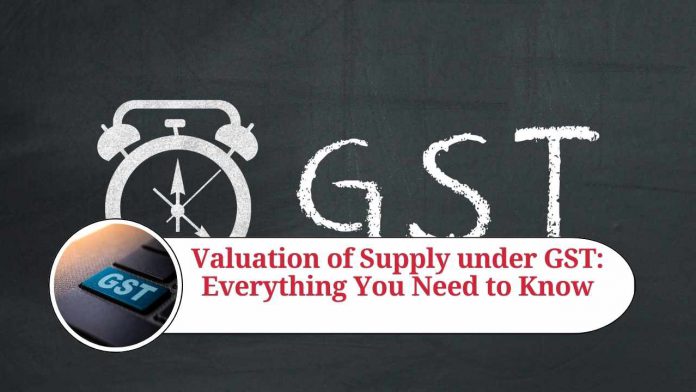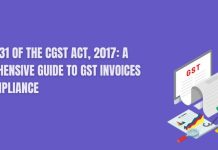The introduction of the Goods and Services Tax (GST) in India has led to significant changes in the tax structure and procedures for businesses. One of the critical aspects of GST is the valuation of supply, which determines the amount of tax payable on the transaction. In this blog, we will discuss the various aspects of the valuation of supply under GST.
What is Supply under GST?
Supply is the key concept in GST, and it is essential to understand the meaning of the term in the context of GST. As per Section 7 of the Central Goods and Services Tax Act, 2017, “supply” includes all forms of supply of goods or services or both, such as sale, transfer, barter, exchange, license, rental, lease or disposal made or agreed to be made for a consideration by a person in the course or furtherance of business. Thus, any transaction involving goods or services or both for consideration falls under the ambit of supply under GST.
Valuation of Supply under GST
The value of a supply is the transaction value, i.e., the price actually paid or payable for the goods or services or both. The transaction value includes any amount that the supplier is liable to pay but is incurred by the recipient of the supply. However, certain other factors need to be considered to determine the transaction value, as follows:
- Time of supply – The time of supply of goods or services or both is the point in time when the supply is deemed to have taken place. The time of supply is relevant in determining the value of the supply.
- Place of supply – The place of supply is also relevant in determining the value of the supply, as it determines the applicable tax rate.
- Related party transactions – If the supplier and recipient of the supply are related parties, the transaction value may be influenced by the relationship, and the value of the supply may need to be determined based on other methods.
- Discounts – Any discounts offered by the supplier to the recipient of the supply may also need to be considered while determining the value of the supply.
- Input tax credit – The value of the supply may be impacted by the input tax credit claimed by the recipient of the supply.
Methods for Valuation of Supply under GST
If the transaction value cannot be determined, the value of the supply needs to be determined by other methods. The following methods are prescribed for determining the value of the supply:
- Residual method – If the value of the supply cannot be determined using any of the other methods, the value will be determined using the residual method, i.e., based on the cost of production, manufacture, or the value of similar goods or services.
- Cost-plus method – In the cost-plus method, a predetermined percentage of profit over the cost of production or manufacture is added to determine the value of the supply.
- Comparable uncontrolled price method – In this method, the value of the supply is determined based on the price at which the goods or services are sold to an unrelated party.
Conclusion
Valuation of supply is a critical aspect of GST, and businesses need to ensure that the correct value of the supply is determined to avoid any issues with tax compliance. The valuation of supply under GST is based on the transaction value, and various other factors need to be considered while determining the value of the supply. Businesses need to be aware of the various methods prescribed for determining the value of the supply under GST to ensure compliance with the GST laws.
Read more useful content:
- GST Rules and Regulations in India
- GST Software
- GST Billing Software
- Billing Software
- GST on diamonds
- Making GST Payments
- GST E-invoice
Frequently Asked Questions (FAQs)
Q1. What is the transaction value for the purpose of valuation of supply under GST?
A1. The transaction value is the price actually paid or payable for the goods or services or both in a transaction, which includes any amount the supplier is liable to pay but is incurred by the recipient.
Q2. What factors need to be considered while determining the transaction value of a supply under GST?
A2. The time of supply, place of supply, related party transactions, discounts, and input tax credit are some of the factors that need to be considered while determining the transaction value of a supply under GST.
Q3. Can the transaction value of a supply be reduced due to the discount given by the supplier?
A3. Yes, the transaction value of a supply can be reduced due to the discount given by the supplier, provided certain conditions are met.
Q4. How is the value of a supply determined if the transaction value cannot be ascertained?
A4. If the transaction value cannot be ascertained, the value of a supply is determined based on other methods such as the cost-plus method, the residual method, or the comparable uncontrolled price method.
Q5. Can the input tax credit claimed by the recipient of the supply impact the value of the supply?
A5. Yes, the input tax credit claimed by the recipient of the supply can impact the value of the supply, as it needs to be deducted from the transaction value to determine the taxable value of the supply.
Q6. What is the cost-plus method for determining the value of a supply under GST?
A6. In the cost-plus method, a predetermined percentage of profit over the cost of production or manufacture is added to determine the value of the supply.
Q7. What is the comparable uncontrolled price method for determining the value of a supply under GST?
A7. In the comparable uncontrolled price method, the value of the supply is determined based on the price at which the goods or services are sold to an unrelated party.
Q8. Can the place of supply impact the value of the supply under GST?
A8. Yes, the place of supply can impact the value of the supply under GST, as it determines the applicable tax rate.




















